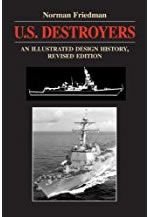USS Conyngham (DD-58),
Boston, 11 February 1919
|
|
USS Conyngham (DD-58) was a Tucker class destroyer that served from Queenstown in 1917-18 then with the US Coast Guard from 1924-1933.
The Conyngham was named after Gustavus Conyngham, a US Naval officer during the War of Independence who served as a commerce raider, fought in the Quasi-War with France and helped defend Philadelphia during the War of 1812.
The Conyngham was launched by Cramps of Philadelphia on 8 July 1915 and commissioned on 21 January 1916. She made 29.10 knots on trials on 7 December 1915. She spent the rest of 1916 operating off the US East Coast, before moving to the Caribbean early in 1917.
On 23 March she returned to Norfolk, where she joined Wadsworth (DD-60) and Sampson (DD-63) in the 5th Naval District Patrol Force, operating off the approaches to Chesapeake Bay.
After the US entry into the First World War in April 1917 the Conyngham was selected to join the first group of US destroyers sent to European waters. She left Boston on 24 April 1917 and was based at Queenstown, Ireland, for the rest of the war. She carried out a mix of anti-submarine patrols, rescue missions and escort duties.
On 17 August 1917 she rescued 39 survivors from the British merchant ship Karina, sunk by torpedoes.
On 19 October 1917 she depth charged a submarine that had just torpedoed the British ship Orama. Her commanding officer was commended for his actions, although the U-boat escaped.
On 22 November 1917 she rescued 30 survivors from the British ship Hartland.
Anyone who served on her between 4 May 1917 and 11 November 1918 qualified for the First World War Victory Medal.
The Conyngham left Queenstown for the United States on 14 December 1918. She underwent an overhaul at Boston, but then spent the next three years in the reserve. She put to sea twice - once for the fleet exercises of February-April 1919 and again to escort a Cuban warship that was carrying the body of former President Gomez back from Key West to Havana.
The Conyngham was decommissioned on 23 June 1922 but reactivated for service with the Coast Guard on 7 June 1924. She took part in the 'Rum Patrol' from then until 30 June 1933 when she was returned to the Navy and decommissioned. She was sold for scrap on 22 August 1934.
Displacement (design standard) |
1,090t (DD-57 to DD-59) |
Displacement (loaded) |
1,205t |
Top Speed |
29.5kts at 17,000-18,000shp |
Engine |
2-shaft Curtis turbines |
Range |
2,500nm at 20kts (design) |
Length |
315ft 3in |
Width |
30ft 6in (DD-58, DD-59, DD-51) |
Armaments |
Four 4in/50 guns |
Crew complement |
99 |
Launched |
8 July 1915 |
Commissioned |
21 January 1916 |
Fate |
Sold for scrap 1934 |
 U.S. Destroyers: An Illustrated Design History, Norman Friedmann .
The standard history of the development of American destroyers, from the earliest torpedo boat destroyers to the post-war fleet, and covering the massive classes of destroyers built for both World Wars. Gives the reader a good understanding of the debates that surrounded each class of destroyer and led to their individual features.
U.S. Destroyers: An Illustrated Design History, Norman Friedmann .
The standard history of the development of American destroyers, from the earliest torpedo boat destroyers to the post-war fleet, and covering the massive classes of destroyers built for both World Wars. Gives the reader a good understanding of the debates that surrounded each class of destroyer and led to their individual features.